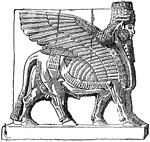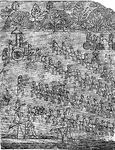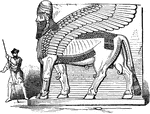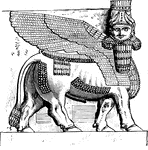Clipart tagged: ‘winged bull’

An Assyrian Winged Bull
Also known as a Lamassu. An ancient tutelary deity, often considered to be female.

Winged Bull
An ancient Assyrian wall relief, depicting the symbol of a winged bull with the head of a human male.

Winged Bull from Nimrud
The Sumerian word lama, which is rendered in Akkadian as lamassu, refers to a beneficient protective…



